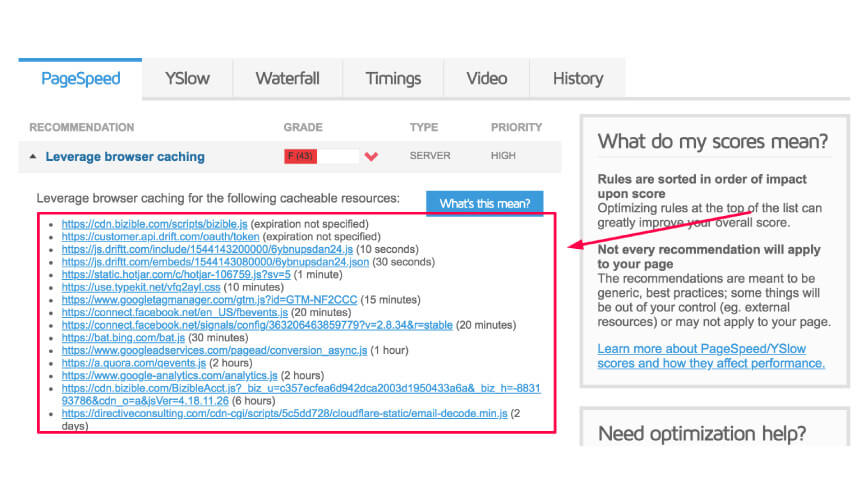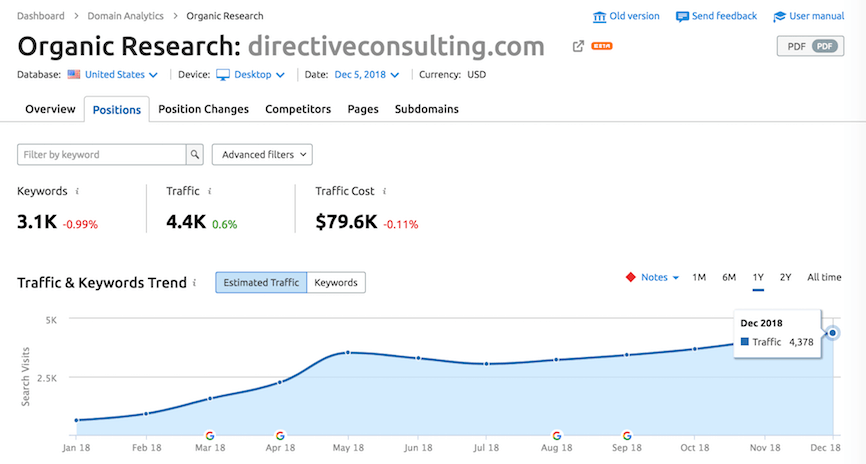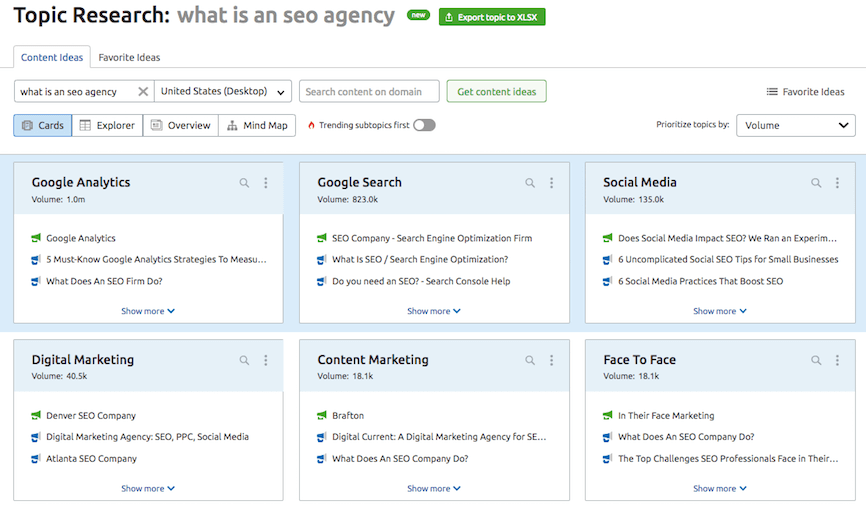The journey to SEO varies from person to person. Some were lawyers, others owned a business, but for me, my specific journey began with web development. I think a web developer foundation of knowledge is extremely helpful for SEO, and its helped me establish my 4 pillar SEO methodology. Before I get into that, I’ll provide a little background about me.
Starting in Web Development
I get asked all the time, “How do I get break into digital marketing?”
That’s a hard question to answer for me because I feel my journey was unique. Growing up I never had a clear idea of what I wanted to pursue, or who I wanted to be.
I started in college as a math major because I enjoyed math in high school and thought I could be a great teacher.
18 year-old-me thought “sure, why not!”
After spending the first four years in college as a math major, we got to calculus in three dimensions, and I was done. I changed my major to marketing because I thought business was a good fall back and felt that I was creative. Marketing seemed to be the least boring choice.
The Switch To Marketing
After almost finishing my degree, I found a marketing internship I could use to further my career development and better understand what I was getting myself into. I interned for a company in Orange County, and one of the tasks they had me perform was updating their website.
It was old, outdated, and no one knew how to use it. This was the first time I had any exposure to doing something like this.
There was something about going into a Content Management System, changing some text around and seeing it live on an actual website that intrigued me. From that first time I clicked “update,” I was hooked and knew what I wanted to be.
I wanted to be a web developer.
I spent the next several years learning and growing by starting my own development company making websites for small businesses in my local area, and then eventually getting a job as a front-end developer for an agency in Los Angeles.
It was there I realized my passion for web development was more of a hobby and doing “webdev” full-time wasn’t for me. However, I did learn that analytical side of web development and search engine optimization was something I was drawn to.
Using Google Analytics to see how adding internal links and call to actions can change user behavior was fascinating.
After I left that job, I started looking for junior level SEO expert positions so I could get my foot in the door and learn what SEO was all about. I found a job at Directive and instantly fell in love with the culture and mentality of the employees.
Learning and growing was a part of the culture and workflow, and that was what I was looking for.
The Four Pillars of SEO Success
When I first started doing SEO, I didn’t know what I was getting myself into. To keep myself up to date on industry trends, I read industry blogs, took several online marketing courses, and tried to apply what I was reading about to the few clients I had at the time.
After many months, and a lot of trial and error, I came up with these four pillars of SEO I found to have the most impact on a client’s digital efforts.
Pillar #1: Technical / On Page SEO
“Building a solid foundation by resolving major technical issues that could be hurting your ability to rank.”
What I Mean:
- Adding/Updating meta titles and descriptions
- Adding/Updating H1 headings
- Fixing Site Speed Issues
- Fixing 3xx redirects, 4xx client errors, and 5xx server errors
- Etc.
Coming from a technical background, technical and on page changes were where I felt comfortable. From my experience, simple meta title and H1 changes still had a decent impact on a client’s rankings and that is where I thought I could impact a client’s SEO the most.
It wasn’t until several months later I realized the error of my ways.
Now, I feel these more technical changes, while foundationally important, don’t move the needle for clients. No matter how important I think fixing a client’s broken 404 links are, chances are they aren’t going to get the client more leads.
But that is precisely why this is a pillar – all these changes and updates are foundationally significant. That means that to be able to use the other pillars effectively, you need to make sure your meta titles and descriptions are on point or make sure none of your links are broken to get the most value out of your content or link building efforts.
That being said, I do know that some of these technical recommendations can have a dramatic impact on SEO performance, but when you are trying to provide your ROI to a CMO of an enterprise level company – saying that you shaved off half a second of page load time may not go over as well as you’d think.
How to Leverage This Pillar:
I know what you’re thinking, “Gee Andy, that sounds great, but how can *I* do this for my clients?” Well, you only need three things to knock it out of the park for your clients:
- A Screaming Frog License
- A Site Speed Testing Tool (I recommend GTMetrix)
- A Keyword Research Tool (I recommend SEMRush)
Let’s dive into each item to learn how to leverage each one:
Screaming Frog is a must-have tool in any technical SEO’s tool chest. Not only does it help you scrape a website and give you pretty much anything you would ever want to know about it, but they offer a free version.
This lets you crawl up to 500 URLs per domain. There is also a paid version for about £149 (or $190) that lets you crawl vast domains and gives the option to save crawls, and set up custom integrations with Google Analytics, Search Console, and more.
GTMetrix is a great free site speed testing tool because not only does it give you easy to read data, but it tells you exactly what is wrong with your site and..
HOW TO FIX IT!
In each report, you get a list of recommendations, a grade on how your site performed, and a priority list for what issues to work on first.
You can see above that we need to work on our browser caching – GTMetrix will give you the exact scripts that are being flagged as issues.
Also, if you click on “What’s this mean?”, you will get the breakdown of your recommendations and how you should fix them.
If you sign up for a free account, you can also get access to crawl pages that require a username or password. Which is great for crawling password protected staging sites!
There are a ton of keyword research tools out there, I think SEMRush has a lot of really cool tools and features built-in, but from my experience, it is also one of the more accurate tools.
Not only does it give you primary metrics like number keywords you rank for, positions, and how much traffic your site gets for each keyword but I this Traffic Cost metric is beneficial as well.
Mainly what this metric shows is how much it would cost in Google Adwords to for your current keyword rankings. This is a cool metric because a company may rank for a ton of keywords, but if they are all branded or keywords that no one wants to rank for, their Traffic Cost will reflect that. And conversely, if a company doesn’t rank for a lot of keywords, but if they rank for the right keywords, they would have a higher Traffic Cost. We use this tool as a comparison metric between our clients and their competitors to help give a little more insight into how they are performing.
Pillar #2: Content Marketing
“Performing keyword research to create and optimize content using data-driven research.”
What I Mean:
- Performing keyword research to create optimized keyword topics
- Creating editorial calendars
- Optimize under-performing blogs to increase organic traffic
- Optimize under-performing blogs to increase conversions
- Etc.
When I started doing SEO, I didn’t have any experience doing anything content related, so this was a new and scary world I had to navigate. After being in charge of doing keyword research, and creating blog posts, I found out pretty early on what kind of keyword research worked and what didn’t.
Once I got a glimpse of the content that drove organic traffic, I knew what had to be the cornerstone for any business wanting to grow.
This is a screenshot of one blog post I published back in November of 2017 that started gaining traction and currently brings in over 3,000 new users each month. This sort of success all comes back to the keyword research and planning that went into this topic to set me up for success.
It’s that simple!
How to Leverage This Pillar:
Luckily, for this pillar this is all you need:
- A Keyword Research Tool (I recommend SEMRush)
SEMRush:
I know I have already talked about SEMRush regarding using it to find keywords for core pages, but it is also a great way to find excellent topics for content strategies!
Not only do they have cool filters you can use to find the exact keyword you are looking for, they have a super helpful “Questions” tab in their Keyword Magic Tool to help you find all educational long-tail keywords based on a short-tail keyword.
But, you can also leverage their Topic Research and SEO Content Template tools.
Topic Research
In this tool, you enter in your general content topic, and it analyzes the SERP to give you ideas on how to write winning content.
SEO Content Template
In this tool, you enter in the keyword you want to rank for, and it tells you what semantically related keywords you should use, where you should get backlinks from, a readability score, and the recommended text length along with basic On-Page SEO recommendations!
Pillar #3: Link Building
“Auditing current brand awareness while building relevant links.”
What I Mean:
- Outreach for unlinked brand mentions
- Fixing broken backlinks
- Guest blogging outreach
- Using HARO
- Etc.
This was another area that I really had no experience in or even knew existed when I started doing SEO. After I learned about how important domain and page authority was, and how links were a massive ranking signal, I knew this is another way to help a business grow.
A lot of SEO specialists try to get as many links as possible and just spam whatever tactic they are using just to get an insane number of backlinks to their site, however irrelevant they may be.
While it isn’t necessarily about the number (although having more definitely helps), the point of link building is to get the most authoritative, and relevant links to point back to your web page.
Raven’s summarized 15 link building strategies, but some people prefer to have others build backlinks for them.
While there are many different ways to go about link building, here is something you will need to get started.
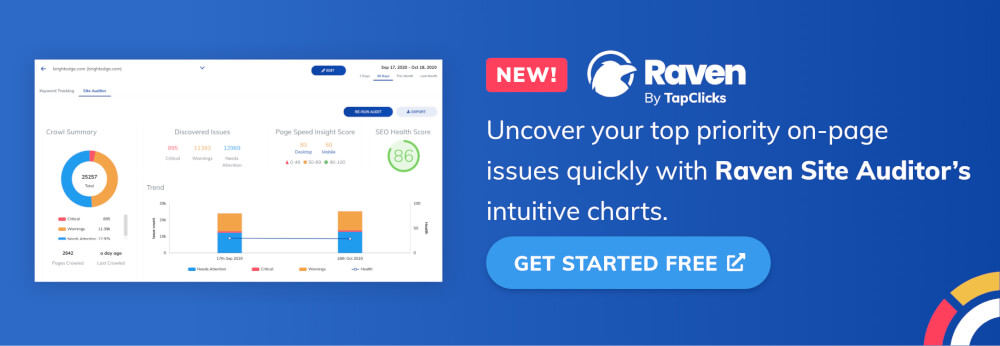


How to Leverage This Pillar:
- An Email Outreach Application (I recommend Pitchbox)
Pitchbox is an excellent platform that allows you to send a string of email cadences to a batch of prospects in mass. It is a great way to manage your outreach in one secure platform and keep track of all your different link building campaigns and prospects!
Pillar #4: Conversion Rate Optimization (CRO)
“Optimizing conversion rates and running A/B tests to increase organic conversions.”
What I mean:
- Gathering user data
- Optimizing core conversion funnels to reduce friction and increase motivation
- Running A/B tests
- Etc.
A lot of other SEO agencies consider search engine optimization as how many keywords their clients rank for or how much organic traffic the website gets.
While those two metrics are great, I believe SEO is how many leads my clients get from their organic channels.
At the end of the day, our clients pay us to help them make more money.
It only makes sense that we don’t just try to get our clients to rank and bring in more traffic, but that we capitalize on their existing traffic and making sure we are optimizing their current conversion funnels as much as possible.
How to Leverage This Pillar:
To help your clients improve on CRO, here is what you will need:
- A heat mapping tool (I recommend Hotjar)
- An A/B testing tool (I recommend Google Optimize)
Let’s dive into each one:
Hotjar is a solid platform that allows you to see exactly how users are interacting on your website. While there are a lot of various tools out there, I have always enjoyed Hotjar because it is simple, yet powerful.
We create a lot of heat maps for our clients which allow us to see how far down a page a user scrolls, clicks data, and moves their mouse.
We have also leveraged their funnels to create multiple heat maps to see where or how a user is falling out of our core conversion funnels.
But, more importantly, Hotjar isn’t an expensive tool. So, this is one to consider and start making positive changes for your clients.
As a free A/B testing platform, Google Optimize is an excellent addition to any SEO’s tool chest! We typically use Hotjar in conjunction with Google Optimize to allow us to create A/B tests based on the user data we see in Hotjar.
Google Optimize has a simple interface that makes any changes reasonably easy to execute. Not only that, but you can also sync it with goals in Google Analytics and compare how version A is performing against version B based on pre-existing goals (or new ones you can create).
Summary
In some capacity, I believe that these four pillars are crucial to seeing any success for a client’s SEO efforts. Here at Directive, we firmly believe in creating tangible ROI for our clients by leveraging their website as a channel to help them generate more opportunities, deals, and revenue.
I hope these pillars help you focus on what’s essential for your clients to not only generate more traffic but drive more sales for your clients and proving your ROI!
Start having an SEO process engineered to deliver, with the results to prove it.
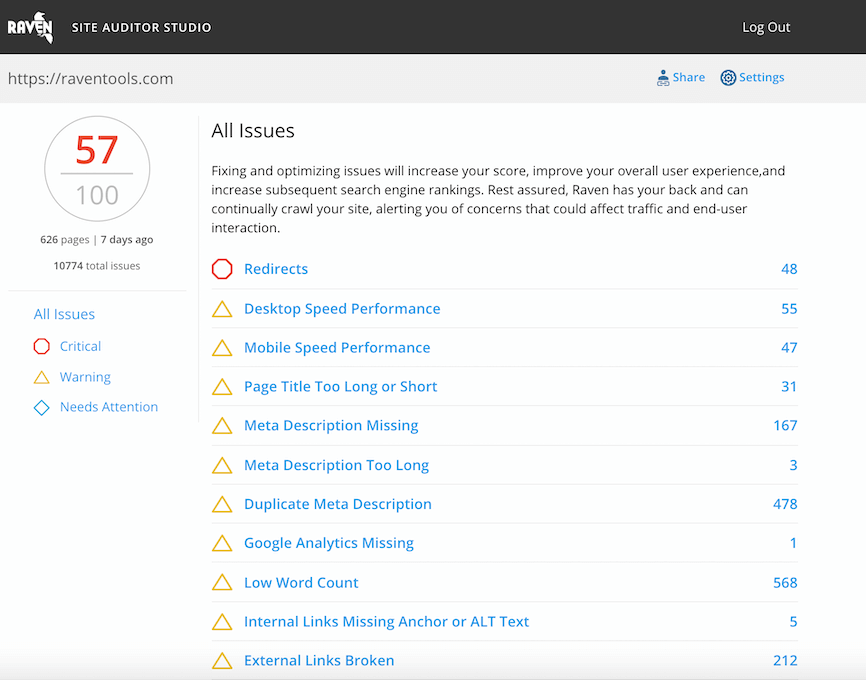
Analyze over 20 different technical SEO issues and create to-do lists for your team while sending error reports to your client.






